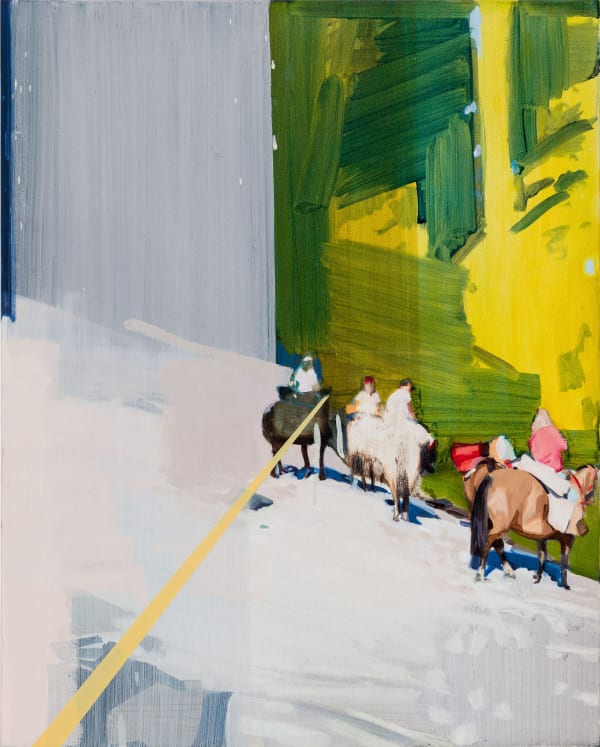-
Christiane Pooley - The Need for Roots
-

-

-
Enquire
-
 Christiane Pooley, La copia feliz, 2020-21
Christiane Pooley, La copia feliz, 2020-21 -
 Christiane Pooley, De mi pueblo solo queda un puñado de cenizas (My Town Now Reduced to A Handful Of Ashes), 2020
Christiane Pooley, De mi pueblo solo queda un puñado de cenizas (My Town Now Reduced to A Handful Of Ashes), 2020 -
 Christiane Pooley, A Piece of Land, 2020-21
Christiane Pooley, A Piece of Land, 2020-21 -
 Christiane Pooley, Sunlight series: Trilla, 2021
Christiane Pooley, Sunlight series: Trilla, 2021
-
 Christiane Pooley, Mental Loop, 2021
Christiane Pooley, Mental Loop, 2021 -
 Christiane Pooley, Sunlight series: lago, 2020
Christiane Pooley, Sunlight series: lago, 2020 -
 Christiane Pooley, Sunlight series: Foot Mark, 2021
Christiane Pooley, Sunlight series: Foot Mark, 2021 -
 Christiane Pooley, Sunlight series: Cueca, 2021
Christiane Pooley, Sunlight series: Cueca, 2021
-
 Christiane Pooley, Sunlight series: El canal, 2020
Christiane Pooley, Sunlight series: El canal, 2020 -
 Christiane Pooley, In Araucanía, 2020
Christiane Pooley, In Araucanía, 2020 -
 Christiane Pooley, You and I Are Earth, 2020-21
Christiane Pooley, You and I Are Earth, 2020-21 -
 Christiane Pooley, But the Earth Abides, 2020
Christiane Pooley, But the Earth Abides, 2020
-
 Christiane Pooley, Sunlight series: Coligues, 2020
Christiane Pooley, Sunlight series: Coligues, 2020 -
 Christiane Pooley, Sunlight series: El último potrero, 2020
Christiane Pooley, Sunlight series: El último potrero, 2020 -
 Christiane Pooley, La luz del Sol series: cueca, 2021
Christiane Pooley, La luz del Sol series: cueca, 2021 -
 Christiane Pooley, Distance 1, 2020
Christiane Pooley, Distance 1, 2020
-
-
-
The exhibition borrows its title from French philosopher Simone Weil's book of the same name in which she states, ‘A human being has roots by virtue of his real, active and natural participation in the life of a community which preserves in living shape certain particular treasures of the past and certain particular expectations for the future.’ This definition resonates with Pooley on a personal level as she was born and grew up in Araucanía, a region in southern Chile that was incorporated into the national territory by means of military occupation and colonisation in the late 19th century. Since then, there has been a continuing conflict between the original inhabitants (who were forcibly assimilated to a newly-built Chilean identity) and the settlers, provoking complex discourse around identity, land ownership and belonging. Whilst the artist is now based in Paris, the conflict has had direct and devastating repercussions on herself and her family. As Chileans that settled in the region (Pooley is 5th generation), their right to live in or identify with the area is now being challenged by certain communities on the grounds of ownership, which are historically founded, but ignore the deeply-embedded emotional connections to place and the nuances of how identity is formed over time. The situation is further exacerbated by governmental indifference, resulting in a stalemate. ‘The conflict is affecting people who did not cause the problem, but are also unable to solve it,’ says Pooley.
This is inevitably a difficult discourse to enter into, but Pooley’s work is non-confrontational; she chooses an intimate lens, mixing memories with archival images to create poetic, liminal spaces and scenes that teeter on the edge of reality and dream. ‘I’m interested in how some memories rise up to the surface in the present and other events from the past are erased, and how history repeats itself from different perspectives. It’s like the act of painting, you build layers on the surface, and in the process parts are erased or covered,’ she says. ‘Painting recalls the passing of time.’ The layers on Pooley’s canvas are visible through broad, smooth, sweeping brush strokes and areas of translucency that simultaneously conceal and reveal the images ‘hidden’ beneath.
-
In this latest series of paintings, water is a recurring element - literally in depictions of lakes and waterfalls, but also, as a felt presence through the use of different shades of blue - as is sunlight, which adds a certain tenderness to the scenes, but these are by no means works of romanticism or nostalgia. There’s a profound sense of stillness that suggests a more complex balance of longing and detachment, and at times, the brush strokes enact a form of erasure that hints at violence. One of the most arresting paintings, for example, depicts a little girl in a blue dress whose head has been wiped away by dark paint while the surrounding landscape is blurred at the edges, seemingly under threat of disappearing entirely. Other works appear more concrete on a first glance, but an underlying tension continues to destabilise and complicate the image. This is perhaps most strongly felt in the variations of a painting of a road, delineated by a bright, straight yellow line that directs the gaze towards a lake and mountains in the distance. Each variation prioritises different details almost as if we are viewing the same setting at different times of the day, and yet, as the perspective changes, we become unsure which version to believe, or whether there even is an objective truth. In the repetition of this image and others, there is something almost painful, akin to the repetition of trauma, that coexists with a haunting kind of beauty.
In the act of image making or representation, the artist inevitably attempts a process of clarification or permanence, but at the same time, her approach is tentative and doubtful. As images appear, and are wiped away, we are left with exquisite sediments, the nuances and ephemerality of human experience.
-
-
Christiane Pooley
Past viewing_room























